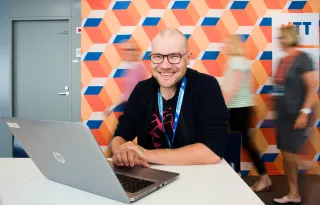VTT analyses MRI images in an EU project teaching machine learning algorithms to identify breast cancer patients who will benefit from pre-operative chemotherapy.
The cost-effectiveness of medical services and patient outcomes can be enhanced by utilising artificial intelligence in the analysis of large amounts of patient data.
VTT is involved in the EU-funded BigMedilytics (Big Data for Medical Analytics) project, one pilot project of which looks at the diagnosis of breast cancer using artificial intelligence and high volumes of MRI image data. Participants in the project also include the large French hospital Institut Curie, which specialises in the treatment of breast cancer patients, and the Israel-based IBM Haifa, which deals with mammography images.
Prediction based on image analysis
Prior to surgery, breast cancer patients are administered neoadjuvant chemotherapy (NACT), which is expected to shrink the tumour and weaken its potential metastases. However, chemotherapy is only beneficial to some patients. Those for whom it is not suitable may suffer from side effects that impair recovery. If the patients who will not benefit from chemotherapy can be identified before starting treatment, they will avoid further harm with costs saved.
- VTT has special expertise in image analysis. We pre-process large amounts of image data consisting of MRI images of patients at the Institut Marie Curie. Based on this, we predict which breast cancer patients will benefit from NACT and for whom it is downright harmful, says Senior Scientist Kari Antila from VTT's Knowledge-Intensive Products unit.
- We classify different types of tissues, their shapes and volumes from MRI images of breast cancer patients to obtain information on the structure of the breast. It may be possible to identify certain types of cancer tumours by looking at the borders of the tumour and analysing its size and shape, among other things. Tumour size, for example, is known to have an effect on the treatment outcome.

Testing machine learning algorithms
The actual analysis is performed by combining patient data with the data collected from MRI images, which includes information on the proportions of different tissue types, tumour structure and metabolism. When, after surgery, it is learned who ultimately benefitted from chemotherapy, it becomes possible to test the ability of different machine learning algorithms to distinguish these patients from the rest.
- Large amounts of image data allow us to teach machine learning to the algorithm, Antila says.
Deep-learning neural networks are revolutionising image analysis
Previously, an expert decided which characteristics and special features to look for in images generated through medical imaging, and what things are relevant in terms of identification. But now, humans have been removed from this process.
- We enter the images for the AI-based algorithm and give the end result, but not directly what to look for in the images. The machine itself determines which things it sees as significant. We develop a neural network with certain characteristics and a specific structure and, based on the results obtained, teach positive and negative responses to treatment, Antila says.
But it is not easy to make the reasoning process of a neural network, which utilises large amounts of data and has been developed to solve complex problems, understandable because there are up to hundreds of thousands of variables to solve within the network.
- We do not know what considerations the algorithm's conclusions are based on. If we are able to decode this reasoning process and indicate the things with significance in the image, it will increase the safety and intelligibility of the AI-based decision-making process, Antila observes.




